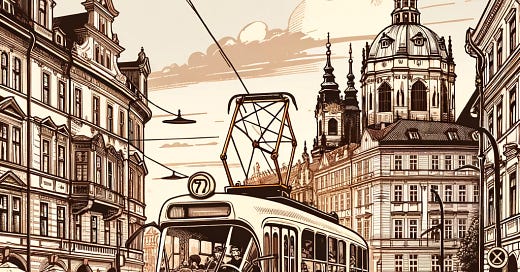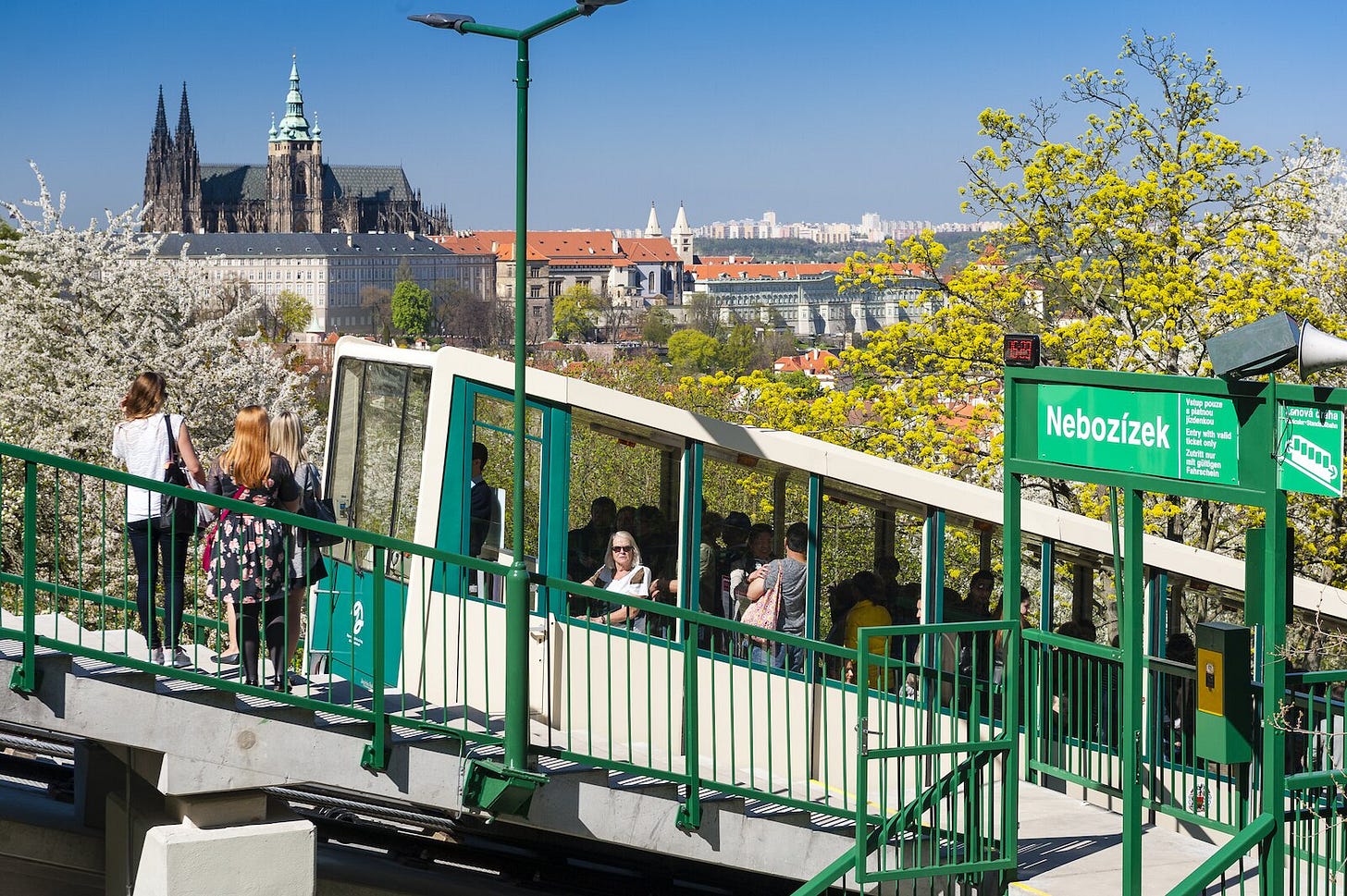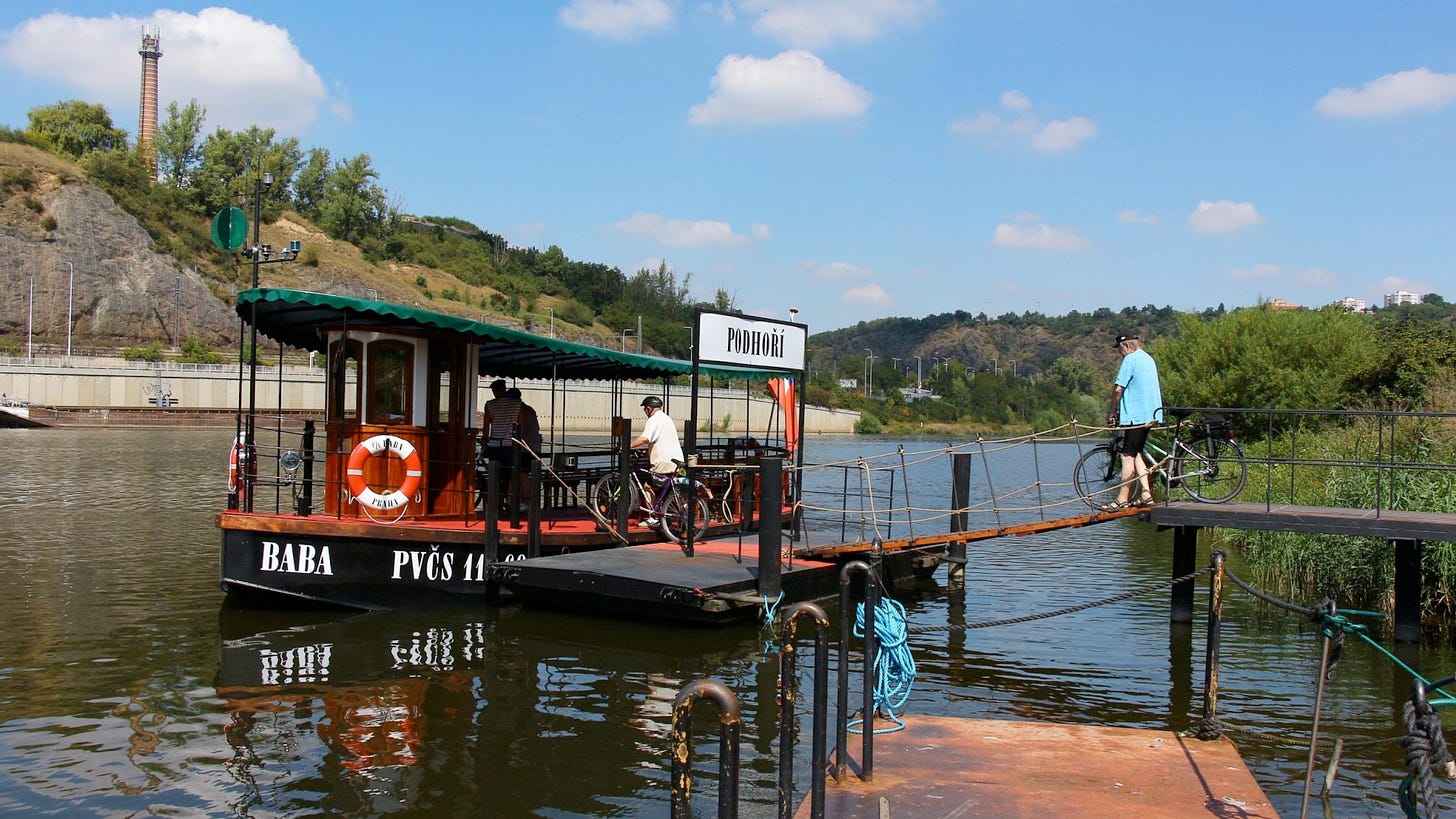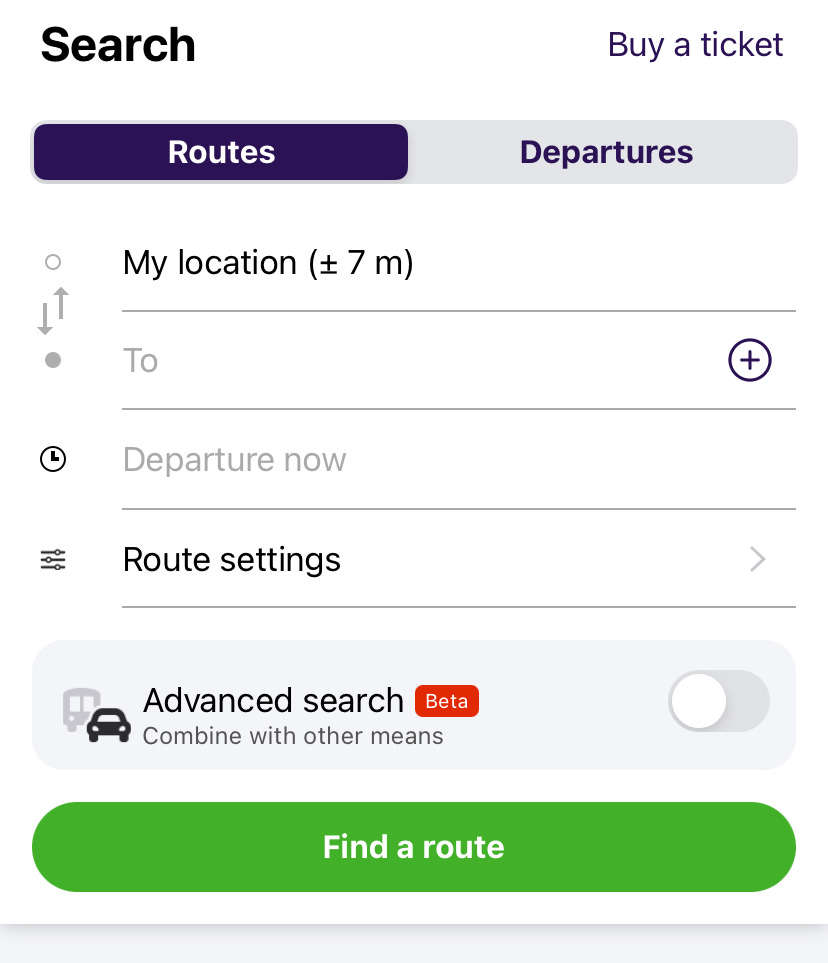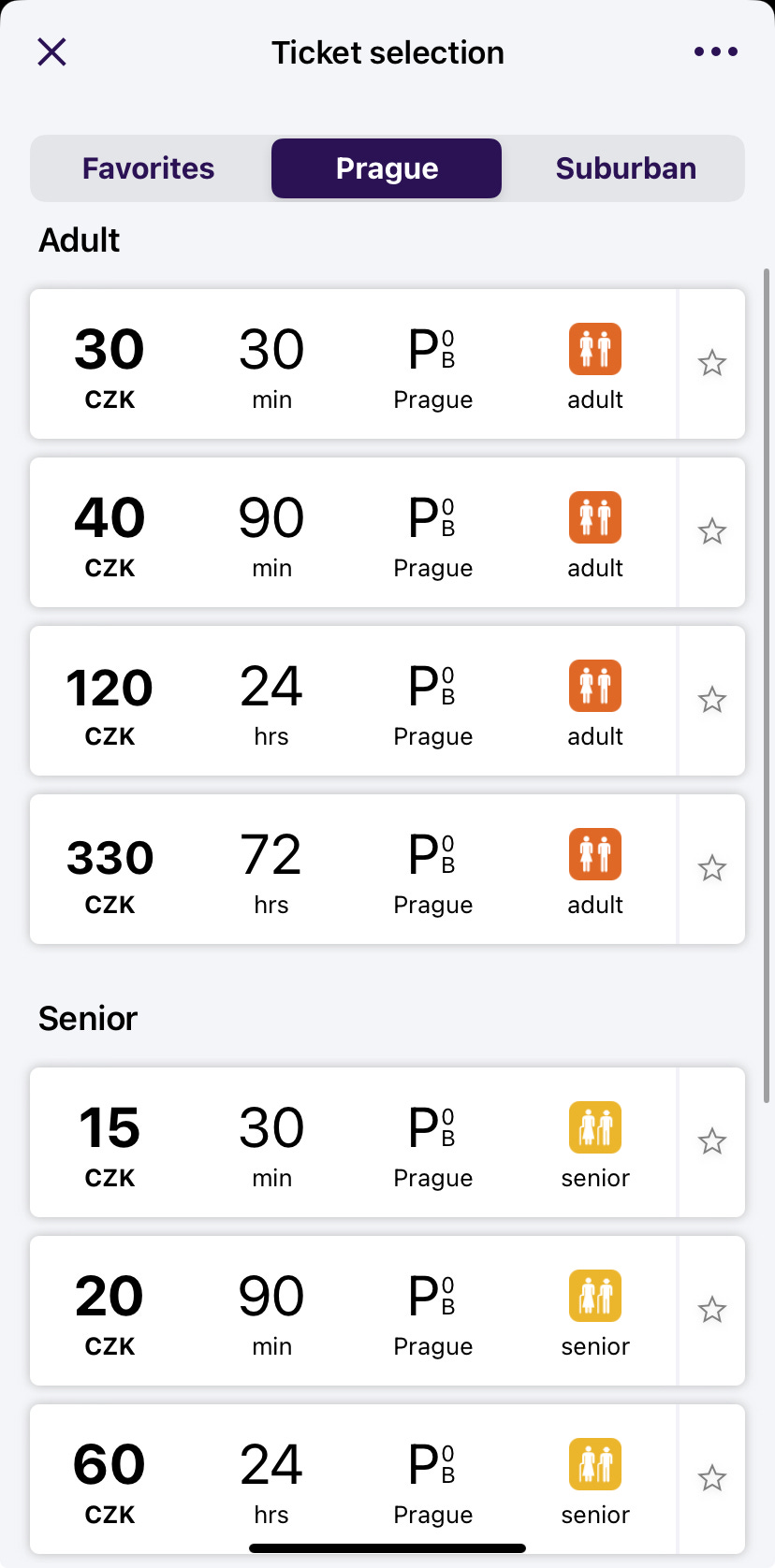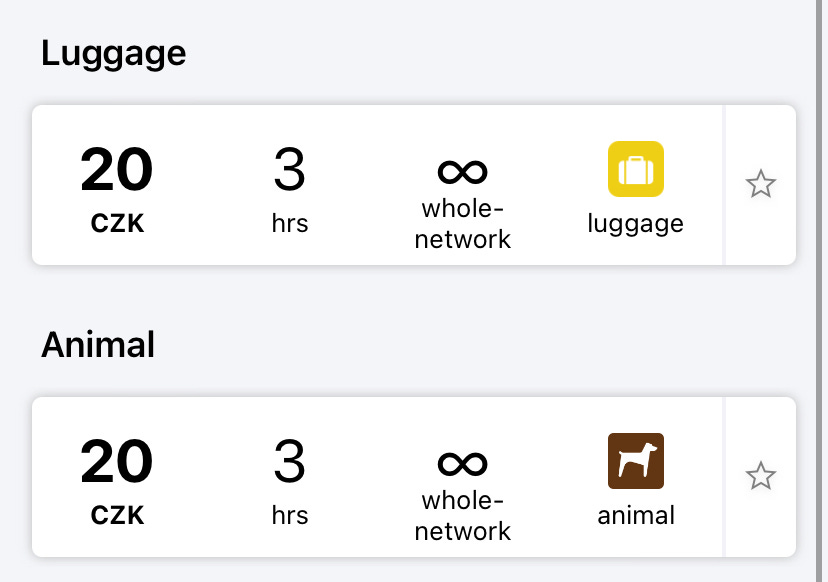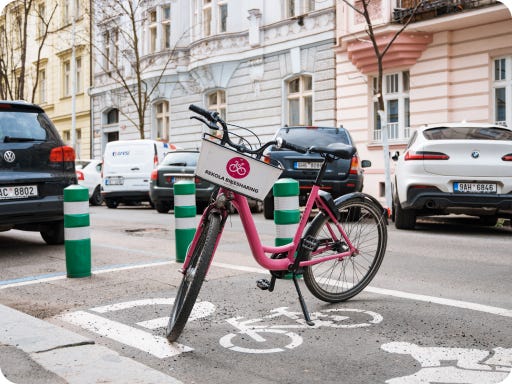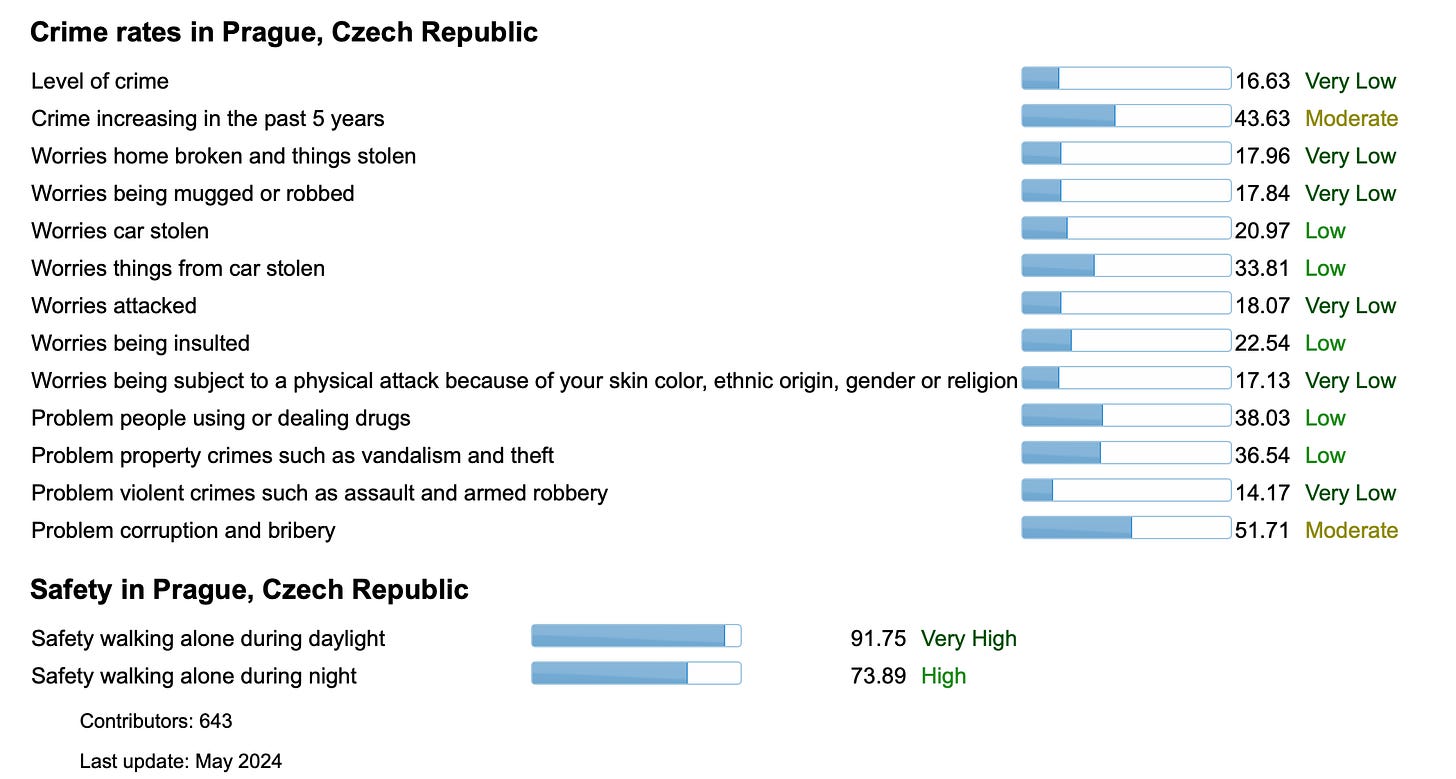Transportation, public transport and safety
Beyond its historical and cultural allure, Prague also boasts a well-developed and efficient transportation system that plays a crucial role in the daily lives of its residents and visitors. This article explores the various modes of transportation in Prague, the intricacies of its public transport system, and the safety measures in place to ensure a secure and reliable travel experience.
1. Public Transport
Options
Prague's public transportation network is well-integrated, offering a variety of options for residents and visitors alike. The main modes of public transport include:
Metro / Subway
The backbone of Prague's public transport system, the metro has three lines (A, B, and C) that connect most parts of the city. The trains are frequent, with 2-3 minutes intervals during peak hours and 5-10 minutes at other times. The metro operates from 5:00 AM to midnight.
Trams
Trams complement the metro by covering areas not accessible by underground trains. They run both day and night, with night trams ensuring connectivity throughout the city when the metro is closed. The tram network is extensive, with over 20 routes crisscrossing Prague.
Buses
Buses serve the outskirts and suburban areas of Prague. They are particularly useful for reaching destinations not covered by the metro or tram networks. Like the trams, buses operate day and night.
Funicular Railway:
The funicular railway connects the Lesser Town with the popular tourist spot of Petřín Hill. It is a scenic and convenient mode of transport for those wishing to enjoy the views from the hill.
Ferries
Prague's public transport system also includes several ferries that cross the Vltava River, offering a picturesque way to traverse the city.
Ticketing and Passes
Public transport in Prague operates on a unified ticketing system, making it easy to switch between different modes of transport. Tickets can be purchased at vending machines, newsstands, or via mobile apps → **app.pidlitacka.cz (ios + android)**. They are time-based, with options for 30 minutes, 90 minutes, 24 hours, or longer periods. For frequent travelers, monthly and annual passes are available. The application can be used in English or Czech.
You can search for connections within the application.
→ if you are traveling with an animal or very large luggage, they must have their ticket.
Enjoy Free Bike Rides with Lítačka!
In Prague, cycling has just become even more accessible and affordable thanks to the Lítačka system. If you’re a resident or a visitor with a valid electronic coupon, you can now enjoy free bike rides every day.
Lítačka provides two free bike rides per day, each up to 15 minutes long. This is perfect for short commutes, quick errands, or just enjoying a leisurely ride through some of Prague’s picturesque routes. Whether you’re headed to work, exploring the city’s historic areas, or meeting friends, these bikes are ready to take you there at no cost.
How It Works
Every holder of a valid electronic coupon for Prague public transportation is eligible for this benefit. This includes anyone with a Lítačka card, whether it’s the traditional green card, the PID Lítáčka app (**app.pidlitacka.cz)** on your smartphone, or even integrated into your payment card. The flexibility of the system ensures that no matter how you prefer to manage your Lítačka account, you can still take advantage of this offer.
How to Get Started
To use this benefit, simply check the availability of bikes through the PID Lítáčka app or any partner bike-sharing service integrated with the Lítačka system. Once you find a bike, unlock it using the app, and enjoy your ride. Remember, each free ride lasts for up to 15 minutes, but you can always park and unlock another bike if you wish to continue riding without additional costs.
→ For detailed instructions and to get started, visit Rekola Lítačka.
Tips for Taxis and Ride-Sharing Services
Getting around Prague is easy with taxis and services like Uber and Bolt. Here are some simple tips to help you travel safely and avoid paying too much.
Choose the Right Taxis
In Prague, real taxis are yellow and have a taxi sign on top. Make sure the taxi has a clear license and that the meter is turned on when you start your ride. If a taxi doesn't look right or the driver won't use the meter, it's best to find another one.
How to Pay Fairly
Sometimes, taxi drivers charge too much. To avoid this, you can agree on a price before you go, especially if you get a taxi on the street. It's good to know the usual prices from places like the airport or main train stations to the city center.
From Václav Havel Airport Prague to the City Center:
Taxi: The fare usually ranges from 600 to 800 CZK (about 25 to 35 USD or 23 to 32 EUR, 19.6.2024).
Uber/Bolt: These services generally offer slightly lower prices, usually between 500 to 700 CZK (around 20 to 30 USD or 18 to 27 EUR, 19.6.2024), depending on traffic and time of day.
From Prague Main Train Station (Praha hlavní nádraží) to the City Center:
Taxi: Since this station is already quite central, taxi fares to nearby areas in the center are about 150 to 300 CZK (6 to 13 USD or 5.5 to 11.5 EUR, 19.6.2024).
Uber/Bolt: These services may cost around 100 to 250 CZK (4 to 11 USD or 3.5 to 10 EUR, 19.6.2024) for the same trip.
Using Uber and Bolt
Uber and Bolt are good because they let you see the price before you ride and are easy to use:
Clear Prices: You see the ride cost before you book it, so no surprises.
Easy to Use: You can order a ride with your phone.
Safe and Trustworthy: You can pick drivers who other passengers say are good.
2. Safety
Prague is generally considered a safe city, boasting low crime rates compared to other major European capitals. However, as with any metropolitan area, it is important to remain vigilant and take common-sense precautions.
Crime Rates: Prague enjoys relatively low levels of violent crime. Petty crimes such as pickpocketing and bag snatching can occur, particularly in tourist-heavy areas like Old Town Square, Charles Bridge, and Wenceslas Square. Awareness and precaution can significantly mitigate these risks.
Police Presence: The city has a visible and active police presence. Police officers, including those from the special tourist police force, patrol popular areas to assist tourists and deter criminal activities.
Emergency Services: Prague has efficient emergency services, including medical assistance and fire services. The emergency contact number in the Czech Republic is 112, which can be dialed for immediate help in any emergency.
Health and Safety: Prague's healthcare system is modern and accessible, with numerous hospitals and clinics offering high-quality medical care. Pharmacies are widely available, and many staff members speak English.
Safe Neighborhoods: Most neighborhoods in Prague are safe, but it's always wise to research specific areas if you're planning a visit or move. Areas like Vinohrady, Letná, and Dejvice are known for their safety and pleasant living conditions.
Tourist Scams: While not rampant, tourists should be aware of potential scams, including overcharging by taxis and deceptive currency exchange practices. Using reputable services and being informed about local prices can help avoid these issues.
→ If you're interested in learning more about scams, check out Honest Guide on YouTube: https://www.youtube.com/c/HONESTGUIDE
Safety in Prague's Public Transport
Prague’s public transport system is renowned for its efficiency, affordability, and safety. The network, which includes the metro, trams, and buses, is well-regarded for its cleanliness and reliability. Various safety measures are in place to protect passengers:
Surveillance: CCTV cameras are installed throughout the public transport system, including metro stations, trams, and buses. This extensive surveillance helps deter criminal activities and provides evidence in case of incidents.
Security Personnel: Security staff and police officers regularly patrol the public transport network. Their presence enhances the sense of security among passengers and ensures rapid response to any disturbances.
Emergency Assistance: Emergency buttons and intercoms are available in metro stations and on trams and buses. These systems allow passengers to quickly contact security personnel or report emergencies.
Well-Lit Areas: Metro stations, tram stops, and bus stops are well-lit, creating a safer environment, especially during nighttime. Proper lighting deters criminal activities and helps passengers feel more secure.
Cleanliness and Maintenance: Regular cleaning and maintenance of the public transport facilities contribute to a pleasant and safe environment. Well-maintained vehicles and stations reduce the risk of accidents and enhance overall safety.
Public Awareness Campaigns: The Prague Public Transit Company (DPP) runs awareness campaigns to educate passengers about safety practices. Tips on protecting personal belongings, reporting suspicious behavior, and using transport services responsibly are communicated through various channels.
Accessibility: Efforts to improve accessibility have made public transport in Prague safer for everyone, including people with disabilities. Elevators, ramps, and low-floor trams and buses facilitate safe travel for all passengers.
Night Services: The public transport system operates night services, ensuring that residents and visitors can travel safely even during late hours. Night trams and buses are particularly useful for those working late shifts or enjoying Prague's nightlife.
Community Engagement: Initiatives involving community engagement, such as neighborhood watch programs and collaboration with local businesses, contribute to the overall safety of the public transport system.
As a 24-year-old Czech woman, I've never felt significant fear while using public transport in Prague. Yes, I've encountered drunk people at night who, if causing trouble, were escorted out. But I've never experienced harassment. There's always someone there to help you. Of course, one must always be cautious of suspicious-looking individuals, stay alert, and trust their intuition.

